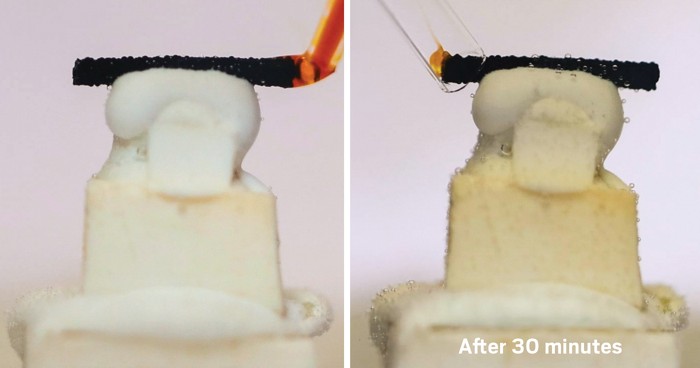Advertisement
Grab your lab coat. Let's get started
Welcome!
Welcome!
Create an account below to get 6 C&EN articles per month, receive newsletters and more - all free.
It seems this is your first time logging in online. Please enter the following information to continue.
As an ACS member you automatically get access to this site. All we need is few more details to create your reading experience.
Not you? Sign in with a different account.
Not you? Sign in with a different account.
ERROR 1
ERROR 1
ERROR 2
ERROR 2
ERROR 2
ERROR 2
ERROR 2
Password and Confirm password must match.
If you have an ACS member number, please enter it here so we can link this account to your membership. (optional)
ERROR 2
ACS values your privacy. By submitting your information, you are gaining access to C&EN and subscribing to our weekly newsletter. We use the information you provide to make your reading experience better, and we will never sell your data to third party members.
Separations
Caffeine Source: A Bean, A Leaf, Or A Lab
Food Analysis: A new method quickly distinguishes between natural and synthetic caffeine
by Rajendrani Mukhopadhyay
February 29, 2012

Is your caffeinated buzz from a natural or artificial source? Researchers in Germany have now developed an easy way to determine whether drinks contain natural or synthetic caffeine (Anal. Chem., DOI: 10.1021/ac203197d).
Under Food & Drug Administration regulations, when manufacturers add caffeine to drinks, such as sodas or energy drinks, they must mention it on the label. But labels for tea, coffee, and other naturally caffeinated drinks don’t need to list caffeine. Because synthetic caffeine is less expensive than natural caffeine, unscrupulous manufacturers may slip in the synthetic version and pass off the drink as a naturally caffeinated beverage, ignoring the labeling requirement.
Existing methods to discriminate between natural and synthetic caffeine require extracting the caffeine from the drink, which makes them time consuming and laborious, explains analytical chemist Maik A. Jochmann at the University of Duisburg-Essen in Germany. To test beverages directly and avoid extraction, Jochmann and colleagues developed a method with high-temperature liquid chromatography and isotope ratio mass spectrometry. By analyzing 42 naturally caffeinated and 20 artificially caffeinated drinks, the investigators showed that the carbon isotope ratios could distinguish between the two types of caffeine. Carbon isotope ratios depend on the origin of the material, explains Jochmann: plants versus petroleum-based laboratory chemicals.
Jochmann and colleagues next analyzed 38 drinks purchased at grocery stores. They found four—an instant coffee, two iced teas, and one maté, which is a South American herb that can be brewed like tea—that explicitly claimed to contain natural caffeine but contained synthetic. Jochmann declines to reveal the identity of the mislabeled brands but says his lab’s approach “has the potential to become a routine method for authenticity control of caffeine-containing drinks.”



Join the conversation
Contact the reporter
Submit a Letter to the Editor for publication
Engage with us on Twitter